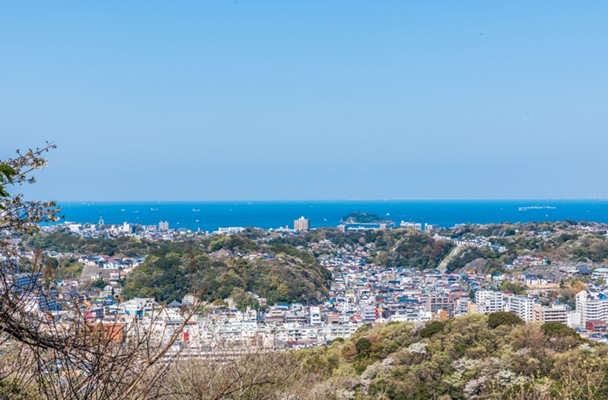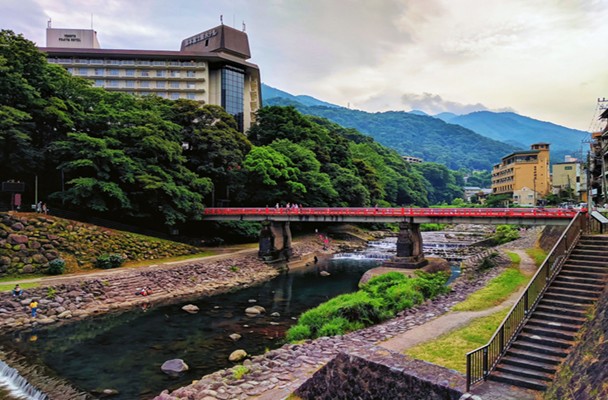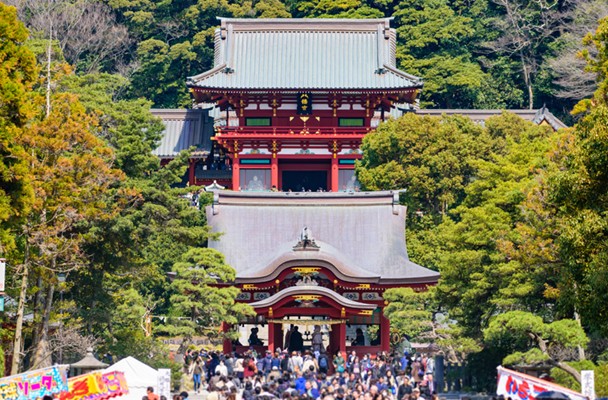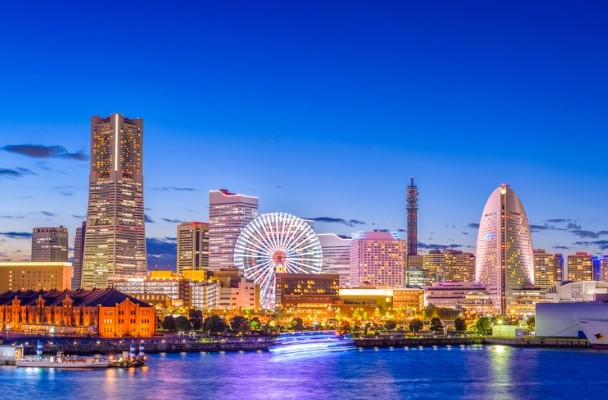Kenchoji Temple in Kita-Kamakura is the no.1 of Kamakura's five great Zen temples. It is a prestigious temple that is said to be the origin of Zen Buddhism in Japan. Its principal buildings such as Sanmon, Butsuden and Hatto are lined up in a characteristic Chinese temple layout. In this article, we will provide an overview and information about the highlights and seasonal flowers of Kenchoji Temple.
About Kenchoji Temple
The Rinzai sect Kencho-Ji group’s head temple “Kencho-Ji Temple” is the no.1 of Kamakura's five great Zen temples. There was an execution place called “Jigokugayatsu” (Hell Valley) originally and the temple called “Shinpeiji Temple” was built. The temple was then abandoned and only the Jizo-do was left. Therefore, Kenchoji temple is a precious Zen temple dedicated to the Jizo Bodhisattva. Kencho-Ji Temple was founded by Rankei Doryu, a Chinese Zen master who was invited from Song dynasty. He opened the first pure Zen training hall in Japan with more than 1,000 monks training there at one time.
At the time of establishment, buildings such as Somon, Sanmon, Butsuden and Hatto were lined up. Kuri(kitchen), Sodo(Monks' Hall), Yokushitsu(bath) and Tosu(toilet) were symmetrically built. However, due to frequent fires and earthquakes, most of the wooden buildings at the time of the construction of Kenchoji Temple were lost. Most of the buildings seen today are reconstructed in the early modern period. Today, it still retains the atmosphere of Zen Buddhism arrangement at the time. The whole temple is designated as one of Japan's national historic sites and regarded as a tourist destination.
Highlights of Kenchoji Temple
The highlight is the spectacular Sanmon gate rebuilt in 1775. It is a solid copper roofing two-storey gate with a rustic structure that embodies the world of Zen without a wall or door. There are statues such as Gohyaku Rakan statues on the upper deck (not open to the public).
In addition, the Hatto of Kenchoji Temple is the biggest in the Kanto area. It is known as the only one in Kamakura and is designated as one of Japan's important cultural properties. In the hall, Sahasrabhuja statue is enshrined. A huge drawing, the Unryu-zu (painting of dragon and clouds), of about 10 meters long and about 12 meters wide is drawn over the ceiling of the Hatto.
In addition, near the end of the temple's garden, over a hill stands the Hansobo. The 250-step stair leading to the shrine is enshrined with a dozen statues representing Tengu. The very top of the hill can be reached by going up the steep stairs. From there, you can overlook Yuigahama and Mount Fuji.
Seasonal flowers at Kenchoji Temple
Along the path leading to the Sanmon Gate from the Somon Gate, there is a row of cherry blossom trees of Somei Yoshino. They bloom from the end of March to the beginning of April. Their flamboyant colours make the usual solemn atmosphere disappear. To add, the path to Hansobo also has cherry blossom trees. Besides the cherry blossoms in spring, summer lotus, autumn leaves and late autumn sasanqua camellia here are also famous.
Spot Information
- Spot name: Kenchoji Temple
- Street Address: 8 Yamanouchi, Kamakura, Kanagawa 247-8525
- Access: About 15 minutes on foot from JR Yokosuka line "Kita-Kamakura" station; About 5 minutes by Enoden bus bound for "Kamakura-eki" from JR Yokosuka line "Kita-Kamakura" station. Get off at "Kenchoji" bus stop.
- About 30 minutes on foot from JR Yokosuka Line "Kamakura" station; About 10 minutes by Enoden buses bound for "Ofuna". Get off at "Kenchoji" bus stop.
- Wi-Fi: Free Wifi spots on site SSID: Kamakura_Free_Wi-Fi_2 KENCHOJI_FREE_WI-FI
- Language: Pamphlet in English; Information board in English, Chinese and Korean
- Ticket: 500 yen (high school students or above: 500 yen; elementary and middle school students: 200 yen)
- Credit cards: Cannot be used
- Opening hours: 08:30~16:30
- Closing days: None






Comments